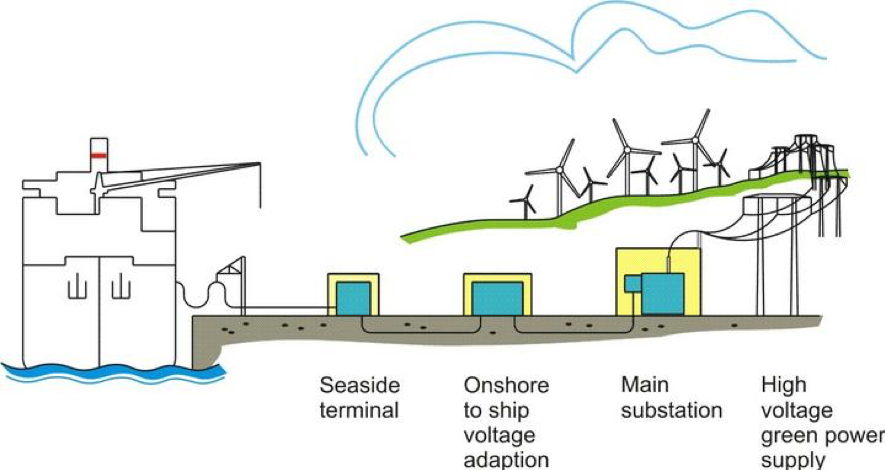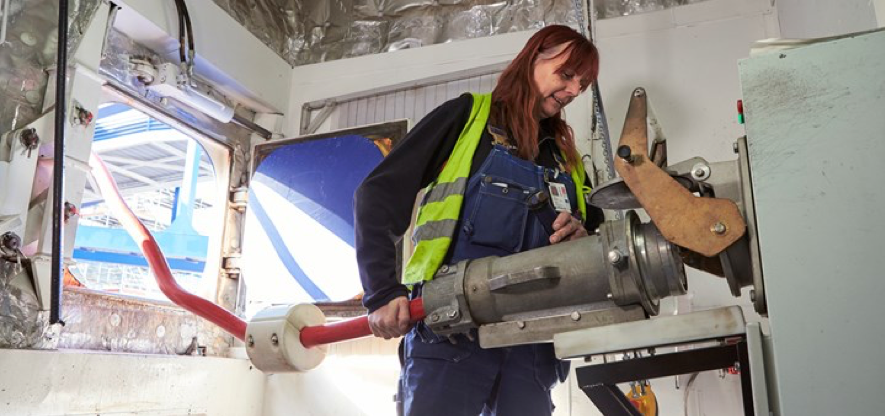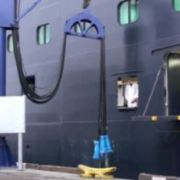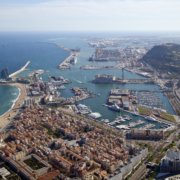#DidYouKnow – Onshore Power Supply
The time is now approaching when the shipping industry will undergo tremendous shifts and transformations. The maritime sector has started to leave behind its conservative style and began to implement some major changes; largely in terms of technological strategies. A sector that has historically shied away from succumbing to the appeal of new gadgets and systems has begun to embrace them in light of the technological challenges brought on by shifting consumer demands and expectations. It has become clear that not joining this new wave of change may leave the maritime alternatives out of the markets.
We live in a time where not only are we helped and pushed to innovate by technologies, but also motivated by conscientious societies that call for environmental awareness requiring all to be more involved with sustainable decisions and procedures.
It is against this backdrop that the sector responsible for transporting more than 80% of the world’s goods has a lot to contribute, and has recently witnessed more initiatives and willingness from its actors.
The maritime sector brings together many actors, each with their own requirements and specifications. Nevertheless, it is the ports that shoulder the responsibility to make smooth interaction between everyone not only possible but as a norm. This has resulted in the emergence of the Smart Ports.
This digital transformation in the ports is being implemented with initiatives to incorporate systems such as Blockchain, the Internet of Things (IoT), Digital Twins, AI, platforms for data management, 5G and technologies and processes that help the transformation of EcoPorts aligned with the European Sea Ports Organisation (ESPO) reports where Air Quality and Energy Consumption are in recent years the priorities to be addressed.
Currently the IMO is trying to establish new limits for the control of emissions in the world’s fleets, which are aligned with its organizational policies as well as with the SDG 2030 UN agenda goals, more in deep with 11-13 goals for sustainability and climate action. In tandem the ports are looking for options to optimize monitoring and reduce their environmental impact, especially those with close geographical proximity to large cities.
As the ports are links of transport interconnections and areas of operation of vast amounts of equipment and machinery, their policies and the initiatives of their actors have an important impact on sustainability goals. Without a doubt the activities within the terminals have a profound effect, but it is the emissions of the ships that generate significant impacts.
Setting fixed limits on ship emissions is currently undergoing a strong debate in the IMO. Some ports are taking initiative on this issue by implementing OPS – Onshore Power Supply (also known as: Alternative Maritime Power (AMP), Cold Ironing, Shore Power, etc.), which reduce emissions from vessels during their stays in ports through the supply of onshore electric power avoiding or reducing the use of ship generators.

Source: http://articles.maritimepropulsion.com/article/Shore-to-Ship-Power-Supplies16652.aspx
This technology not only requires an important infrastructure investment, but above all it requires ensuring that the generation of this energy is clean so that the problem is really solved and not relocated. On the other hand, it requires the collaboration of all those involved, which in most cases includes the port authorities, liner service shipping lines (with frequent calls), the terminal operators, the local communities, suppliers of electricity and automation technology and environmental engineers, among others.
Currently there are more than 8 OPS technology suppliers and the systems handle different frequencies (North America at 60 Hz and Europe and most of Asia at 50 Hz). On the other hand, some ports can also vary between low or high voltage. It is the latter that is becoming increasingly frequent.
The voltage demands of vessels vary in relation to the type of vessel, length and operation as the use of energy differs greatly depending on the equipment or machinery that the vessel has to put into operation during its stay. The following gives a rough idea of how the consumptions are distributed:

http://wpci.iaphworldports.org/onshore-power-supply/implementation/equipment-and-solutions.html
This in turn requires the vessel to have a facility onboard to make the connection of the land cable. Today there is already a large number of shipping companies have incorporated these proposals on part of their fleets; in particular regular line services as the land connection proves to be significantly beneficial the larger the number of port calls.
In order to motivate the use of OPS, some ports have implemented the reduction of port fees for vessels using OPS System in order to motivate shipowners to incorporate them to their fleet of ships. For its part, the EU is establishing guidelines and directives that oblige member states to take the necessary measures to address the environmental problem. Added to this is the recent debate regarding the implementation of the Mediterranean area as a possible SECA area.

Source: https://sustainableworldports.org/project/iaph-onshore-power-supply/
Technology is changing the way societies function and taking in to account the environmental actions that currently need to be address. The Internet of Things is slowly building connections between the physical world and linking it to the digital real. We have already witnessed smartphones, smart cities, smart cars. Now it is the turn of the ports to digitise themselves and join the revolution. The Escola has partnered with the Smart City Expo World Congress, the leading international event for the smart city sector and a key meeting point for experts and leaders of the world’s most innovative cities, companies and research centres. This year’s Fair will take place in Barcelona between the 19-21st of November. Some of the world’s leading Smart Ports will be given the chance to showcase their digital transformations and innovations. It is an event not to be missed. For more information you can visit the event website: http://www.smartcityexpo.com
- Over 25,000 professional visitors are expected, with over 1,000 exhibitors, along with high level representatives from more than 700 cities and over 400 international speakers that will share their vision on how to build a more sustainable and livable urban future.
This year the event will focus on the five main tracks touching the most pressing issues facing cities: Digital Transformation, Urban Environment, Mobility, Governance & Finance and Inclusive & Sharing Cities.
Useful links :
- http://www.cadenadesuministro.es/noticias/el-transporte-maritimo-apuesta-por-el-cold-ironing-para-reducir-sus-emisiones/
- https://sustainableworldports.org/project/iaph-onshore-power-supply/
- https://www.youtube.com/watch?v=cHFExtObUsY
- https://www.greenport.com/news101/opinion/ports-drive-green-policies-in-europe
- https://www.espo.be/media/June%202019.%20SAFETY4SEA.%20European%20ports’%20top%2010%20of%20environmental%20priorities.pdf
- https://www.porttechnology.org/news/what-is-a-smart-port/
Intrigued? Check out the following YouTube video on OPS:
Written by:
- Vanessa Bexiga, Operations Manager (Escola Europea – Intermodal Transport)



